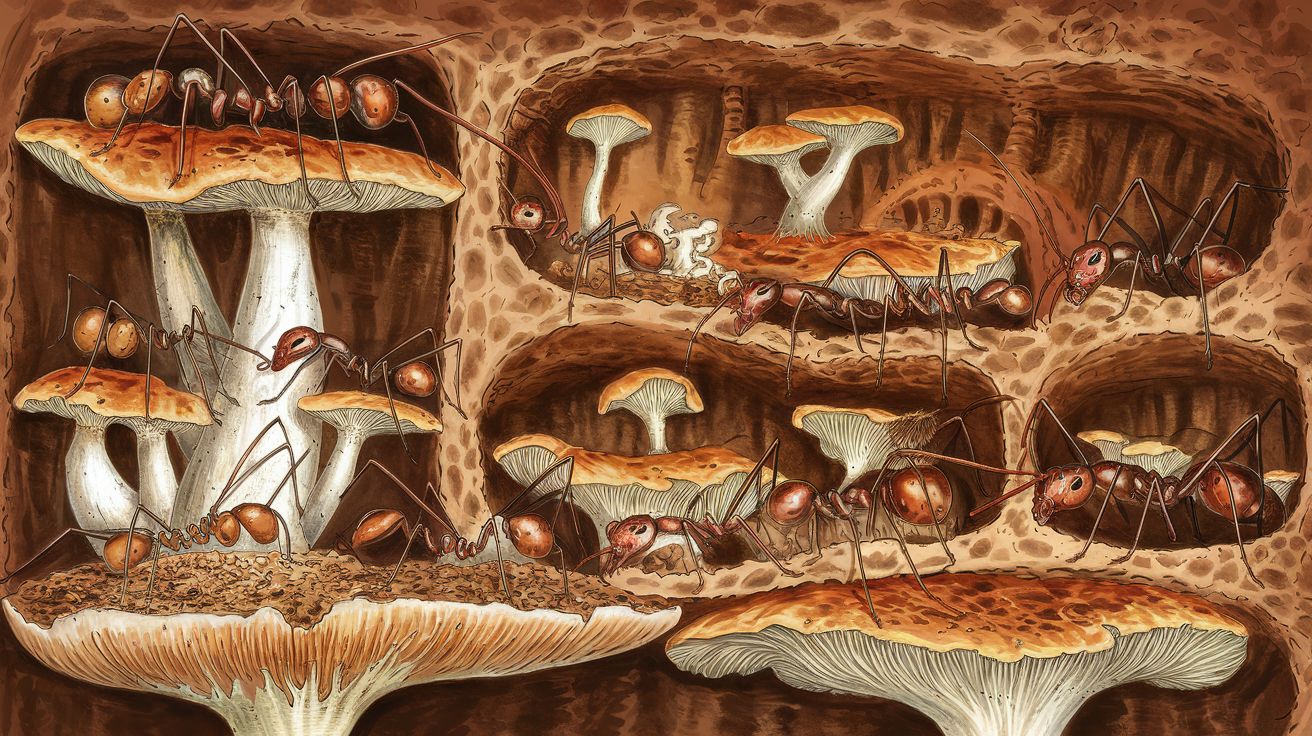Follow us on Google News (click on ☆)
66 million years ago, ants began cultivating fungi, thereby creating underground "gardens," an act that was crucial for their survival.

The asteroid impact blocked sunlight and decimated vegetation. While plants struggled, fungi thrived, providing ants with a new food source.
The mutualistic relationship between ants and fungi, dating back to this era, is based on a precise division of roles. Ants, such as Cyphomyrmex rimosus, act as "cultivators." They collect healthy mycelia, the vegetative part of fungi, and bring it into their nests. This mycelium allows the fungi to grow in a controlled environment.
The ants do more than just harvest; they also protect the fungi from pathogens and parasites using specific bacteria capable of producing natural antibiotics. This sophisticated and ecological defense system ensures the health of their crops. In return, the fungi produce specialized structures, called gongylidia, which serve as food for the ants. These tiny structures are rich in essential nutrients, enabling the ants to efficiently feed massive colonies comprising millions of individuals.
This agricultural model has allowed complex colonies to thrive, as ants manage a cycle of cultivation, protection, and harvesting in perfect symbiosis with their fungi. The continuous production of food ensures the survival and expansion of the colonies in often hostile environments. A remarkable achievement sustained for 66 million years, while humanity struggles to develop sustainable alternatives.
Researchers estimate that this partnership became more robust around 27 million years ago, when forests gave way to grasslands. The ants began feeding their fungi in underground nests. This study, published in Science, highlights the extraordinary adaptability of ants. Long before us, they had already invented agriculture.